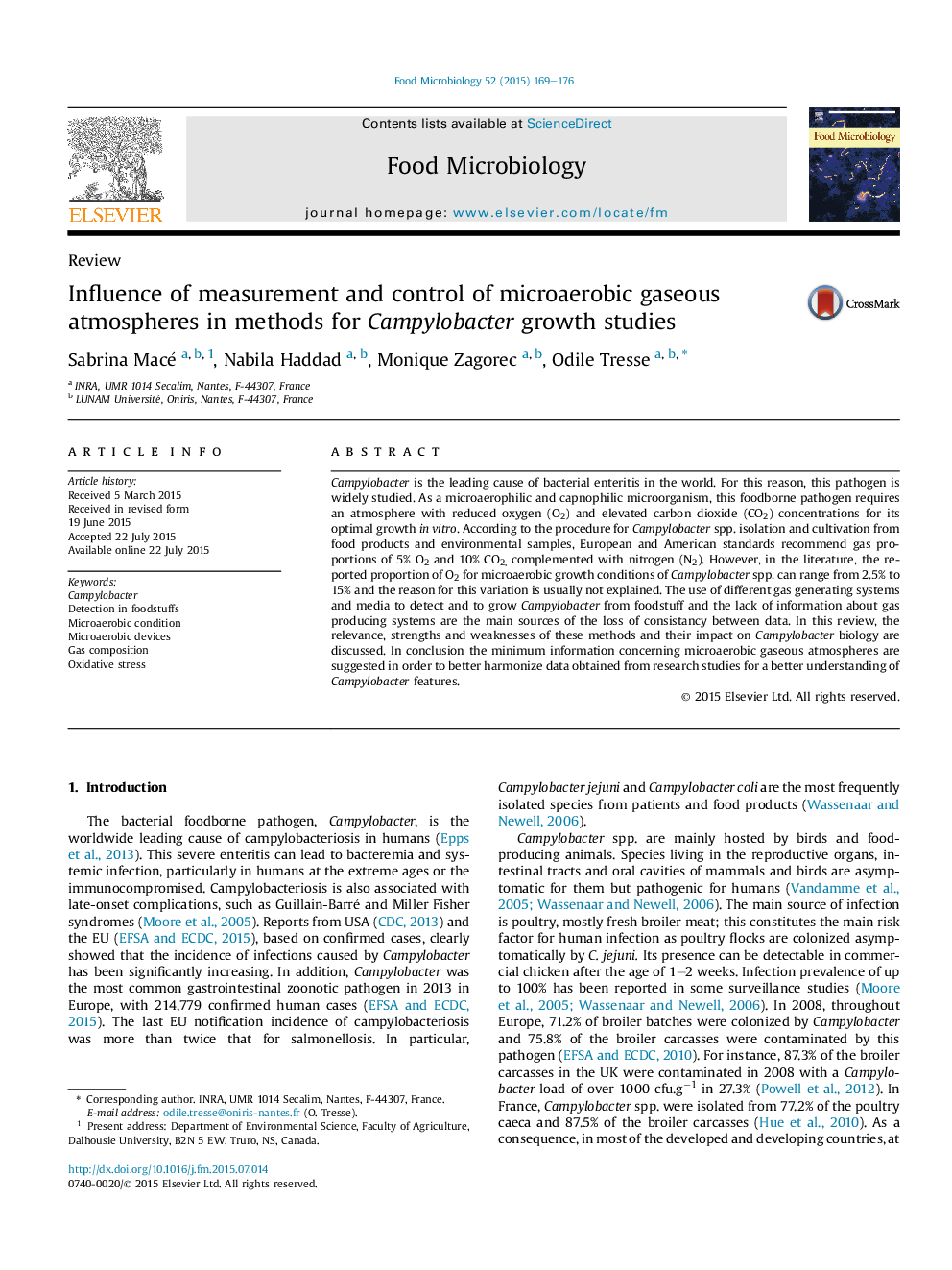| Article ID | Journal | Published Year | Pages | File Type |
|---|---|---|---|---|
| 6288459 | Food Microbiology | 2015 | 8 Pages |
Abstract
Campylobacter is the leading cause of bacterial enteritis in the world. For this reason, this pathogen is widely studied. As a microaerophilic and capnophilic microorganism, this foodborne pathogen requires an atmosphere with reduced oxygen (O2) and elevated carbon dioxide (CO2) concentrations for its optimal growth in vitro. According to the procedure for Campylobacter spp. isolation and cultivation from food products and environmental samples, European and American standards recommend gas proportions of 5% O2 and 10% CO2, complemented with nitrogen (N2). However, in the literature, the reported proportion of O2 for microaerobic growth conditions of Campylobacter spp. can range from 2.5% to 15% and the reason for this variation is usually not explained. The use of different gas generating systems and media to detect and to grow Campylobacter from foodstuff and the lack of information about gas producing systems are the main sources of the loss of consistancy between data. In this review, the relevance, strengths and weaknesses of these methods and their impact on Campylobacter biology are discussed. In conclusion the minimum information concerning microaerobic gaseous atmospheres are suggested in order to better harmonize data obtained from research studies for a better understanding of Campylobacter features.
Related Topics
Life Sciences
Agricultural and Biological Sciences
Food Science
Authors
Sabrina Macé, Nabila Haddad, Monique Zagorec, Odile Tresse,
